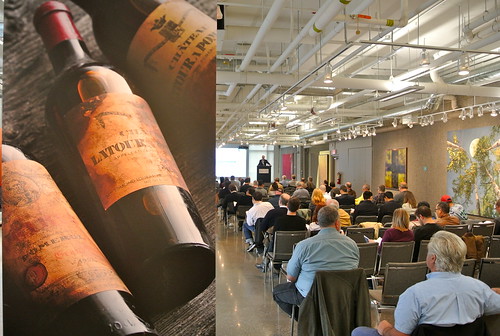
Sh!-Sh!-Sh!!! The sudden scolding comes in rapid fire. And again. Sh!-Sh!-Shhhhh!!! The unruly throng that has gathered here on a Friday night in October to part with over $1.7 million in exchange for some old wine quickly hushes up.
Waddington auctioneer Stephen Ranger knows how to quiet down a room of well heeled and misbehaving bidders, afterall, he tells us, he was a schoolteacher in another life. But the giddiness of the evening, the extravagant wines with dinner and the excitement of scoring some really old, really rare and really expensive wines has the make-shift auction hall at the Trump Tower in downtown Toronto all abuzz.
Ranger will be shushing a lot before this night is over, and, if that doesn’t work, “I’ll break into a little rap,” he deadpans.
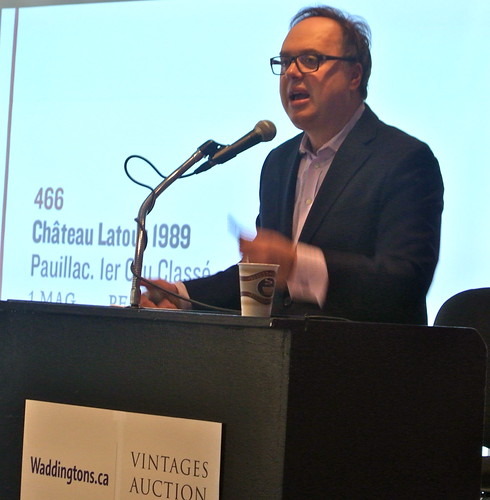
There is an air of frivolity as Ranger, above, declares the auction open to bidding. It’s partially fuelled by a steady diet of First Growth Bordeaux and fine Champagne that some bidders paid $325 a head to enjoy with dinner before the auction, but make no mistake about it, for the bidders in the room along with those on the internet, phone and absentee bidders, this is serious business. One wrong move, one scratch of the head or momentary lapse in judgment, and they could be out thousands of dollars.
Buying wine at auction is not for the squeamish, the light of wallet or for those who have not done their homework.
The annual Vintages Auction of Rare and Fine Wines was started in 2001. Before Vintages, part of Ontario’s government monopoly on booze retailing, got into the game, there were no commercial wine auctions in Ontario at all. The only outlet wine collectors had for unloading their older, prized wines was through the various charity auctions that took place mainly in larger cities such as Toronto and Ottawa.
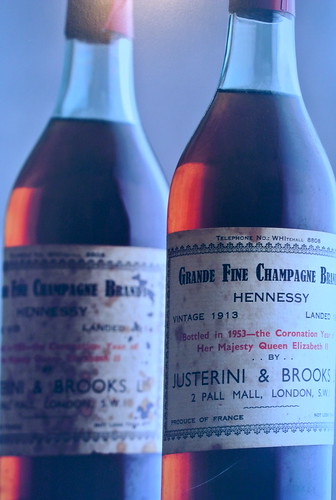
Even then the only way to make any money off your collection was through a tax deduction that was based on the appraised value of the wine you “donated” to the charity conducting the auction. Often, the appraised value far exceeded the actual sale price and the Canada Revenue Agency eventually tightened the rules on wine donations making it far less desirable to go that route for sellers.
I am seated in the centre of the action for the Friday night portion of the Vintages auction with paddle number 22. It is the first of two sessions for the auction with the second part moving to Waddington’s downtown Toronto location the next day. Servers keep glasses of Champagne topped up while those who paid the price for a fancy pre-auction dinner occupy the front of the room, sitting around tables stocked generously with Leoville las Cases 2000, Quilceda Creek Cabernet Sauvignon 2007 and Graham’s Vintage Port 2004. They look quite primed to dive into the delicate art of bidding on rare wines.
The first part of the auction is devoted to “non-reserve” items, meaning that they will be sold at whatever price is bid. The majority of the auction has a reserve price set for each lot; if the minimum is not achieved, the item is removed from the sale and will be re-introduced in the Vintages online auction the following month. The non-reserve wines set the tone for the rest of the auction and provide a good barometer of what people are willing to pay.
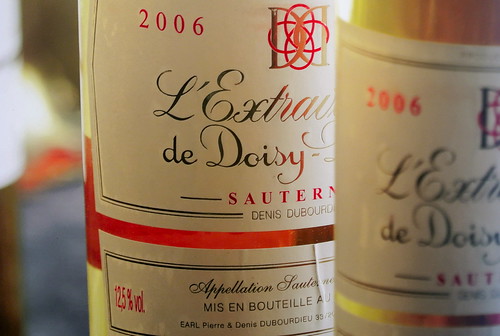
Lot Number One is three bottles of Carruades de Lafite Rothschild 1999 and one bottle of the 2000 with an estimate between $1,100 and $1,600. Ranger gets the action going quickly. “$800, do I hear $800? $700, anyone interested?” Bidding starts at $500 and quickly rises to $600 before the auctioneer suddenly lowers his gavel and we are underway. It’s a shot across the bow from Ranger, who sets the tone for the pace of the auction. If you snooze, you lose.
Ranger works up a good cadence and bidders are picking up some good deals: $300 for six bottles of Napa’s Dalla Valle Cabernet 2003 (high estimate $800), a six-litre bottle of Perrot-Minot Chambolle Musigny La Combe D’Orveau 2006 for $800 (high estimate $2,000) and six bottles of Robert Foley Claret 2005 for $500 (high estimate $1,000).
I get caught up in the heat of the moment, bidding on five bottles of Morey Puligny Montrachet La Truffieres 1995. “Anyone at $300?” My paddle quickly goes up, only to be trumped by the guy right beside me. It rises quickly to $450. I’m in, but when $480 rolls around, I bow out and the gavel comes down. Missed it by that much!
It seems everything I want, older Chateauneuf-du-Papes, Mondavi To-Kalon Cabernet Reserve, and off-vintage Bordeaux lots, is also popular with this crowd hell-bent on scoring a deal.
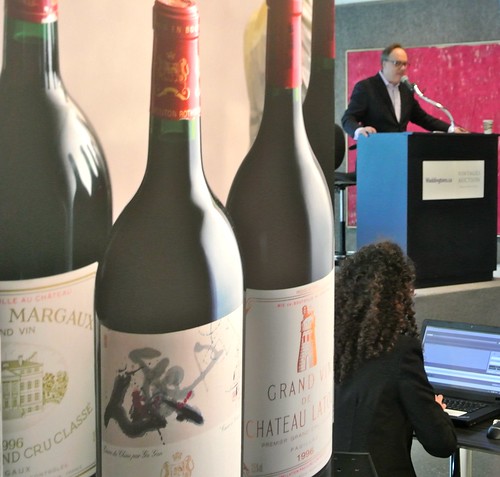
It quickly becomes evident that are two types of buyers here. Those who are looking strictly for high-end vanity wines (First Growth Bordeaux, Super Tuscans, Napa cult wines, top Burgundy and Port in the best in the best vintages) and those, like me, looking for interesting older wines to drink that don’t have the pedigree of the more expensive wines. You know, wines that mere morals can afford.
The difference between the two? The former has no governor; he/she will bid until they win the item, sometimes out of pride, sometimes just because they can. The latter, like me, have a set budget and will quickly bow out of the bidding or face the wrath of his wife when the Visa bill arrives.
There are tedious stretches at a wine auction such as this. Long periods where nothing of interest comes up. I sat through Lot 132, 10 full cases of Chateau Leoville Las Cases 2000, where each case sold at or near the low estimate of $1,900, and the exceedingly boring Lot 173, 16 cases of Vega Sicila Unico 1999, that were either sold at $3,400 per case or had no interest whatsoever, but the auction house goes through the motions to maintain integrity for the consignors.
And the auction is not without its head-scratching moments. Six bottles of Domaine de Chevelier 1982 sold for $500 in robust bidding, at the high end of the estimate. Robert Parker rated this wine 55 points in 2009 and had this to say about it: “Rusty-colored and vegetal, this 1982 resembles green tea more than a serious claret. It is completely dead, and can only get worse.” It pays to do your homework.
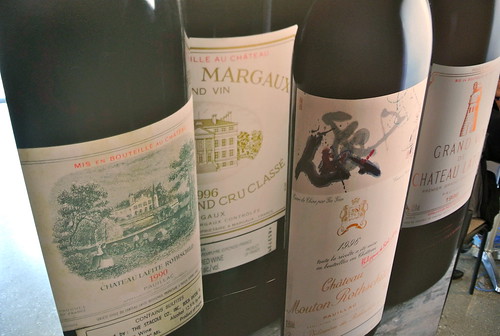
Some of the highlights of the auction included:
• A vertical of Chateau Mouton Rothschild from 1945-2001 (but missing the 1997) sold for $56,160. Previous verticals of this have sold for as low at $37,000 and as high as $65,000.
• A single bottle of 2009 Domanine Romanee Conti Romanee Conti sold for $17,550.
• Six 6 bottles of Chateau Haut Brion 1945 sold for $18,720.
According to Vintages, overall sales were up from $1.5 million last year to $1.7 million this year for 1,404 lots.
The sell-through (lots that sold) was up from 77.7% last year to 84.23% this year.
• An Opus One vertical from 1979 to 2003 sold just under the low estimate of $4,200.
Barry O’Brien, director of special projects for the LCBO, called the results of the 2013 auction “very good.” He said the Vintages auction attracts buyers looking for “classic” Old World wines — “if it’s Bordeaux in original wood (boxes) it moves,” he says. Cult Napa Valley and top Burgundian (though not a lot of it at this auction) wines also sold well with Chilean and Spanish wines sluggish (only 50% of wines from Spain sold, the vast amount of the unsold lots was the Vega Sicila Unico).
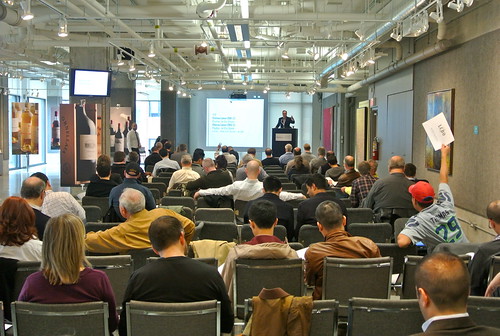
With the addition of online bidding, absentee bidding and phone bidding, the bidder in the room has many more factors to consider. O’Brien said there were 335 bidders online during Saturday’s event while I counted fewer than 100, mostly male bidders, actually on-site. The online component opens the auction up to out-of-province and out-of-country bidding as far away as Hong Kong.
Many of the bidders have deep, deep pockets, says O’Brien, walking away with $100,000 and up in wine over two days of bidding.
Warren F. Porter, president of Iron Gate Private Wine Management, has been monitoring the Vintages auction for six years.
He maintains that sellers are better off taking their wines south of the border where they can fetch better prices. He suggests an auction house such as Hart Davis Hart, with sales of $20 million in four auctions for the first half of 2013, can return a higher price for sellers and the cost for getting the wine to Chicago, through an agent such as Iron Gate, is less than $10 a bottle.
“We have found it’s a much better return in the United States, we just don’t have a buyer’s market (in Canada),” Porter says.
He says the Vintages auction hasn’t increased significantly in years and he sees some of the same lots, such as the vertical of Mouton, coming back for resale year after year.
Porter has some tips for buyers at commercial wine auctions.
• “There are deals if you do your homework. You can find some good bargains.”
• It’s better to bid online or through an absentee bid. “It takes out the emotion of bidding. Don’t be there.”
• Set limits. “If your limit is $1,000, stick to it. Know when to walk away.”
• And, most importantly, factor in the buyer’s premium of 17% (what the auctioneers charge) and the HST of 13%. When the gavel falls at $1,000, you are actually paying $1,300. That 30% add-on can be a killer.
•••
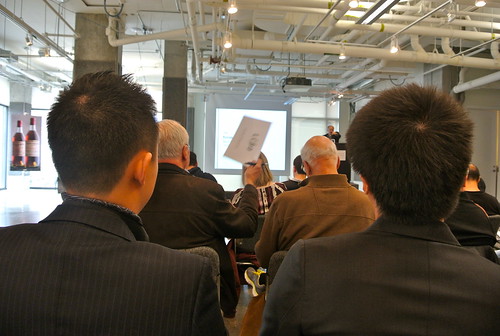
While the two biggest provinces, Ontario and Quebec, are the only provinces to conduct commercial auctions through their liquor board monopolies in Canada, there are thriving charity auctions in most of the other provinces.
I have over the years stocked my modest cellar with wines purchased at many of them: The Willow Park Wines & Spirits Charity Wine Auction, now in its 20th year and one of the largest charity auctions in the country, holds its glitzy affair every November (I have both donated to it and purchased wine); the Toronto Symphony Orchestra Fine Wine Auction, once the marquee wine auction in Ontario before Vintages entered the fray, also holds its auction in November; and many others on a smaller scale that come and go over the years.
One of the most expensive bottles of wine I ever purchased was at the Maggie Trudeau hosted charity wine auction in support of WaterCan in Ottawa many years ago. I bought a bottle of 1963 Taylor Fladgate Vintage Port for $250 (my wife’s birth year) and a few other gems.
Most recently, after walking away with nothing at the Vintages auction, I came across a small online charity auction in support of Serve, a Toronto-based organization that works with youth ages 13-24 in inner-city communities.
I bid furiously on a few items that caught my attention and eventually was successful on two lots — six bottles of top-drawer older Chateauneuf-du-Pape and three bottles of top vintage white Rhone blends. My total was a very modest $483 (estimate was $1,215 for the two lots), which included the 15% buyer’s premium. The purchase was tax-free as the auction was for charity.
For me, that was a no-brainer. I bid from the comfort of my own couch, the proceeds went to charity and I paid no tax on the items.
Popping the cork on one of those beauties will be just a little more satisfying.
NOTE: This article first appeared in Quench wine magazine





Comment here